Norton Commando History
Article by Mark Trotta
From 1968 until the demise of the original company in 1977, the Commando was the main bike in Norton's lineup. Powered by a 750cc parallel-twin, later enlarged to 828cc, the Norton Commando was offered in about 15 models, all within the same engine/frame combo.
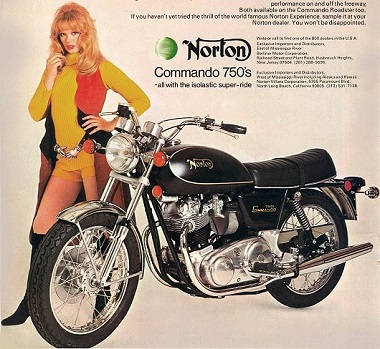
Hallmarks of this classic British motorcycle were performance, style, mechanical simplicity, and a unique engine mounting system.
Beginnings
Throughout the forties and fifties, British bikes dominated motorcycle performance and racing venues. However, by the late sixties, Japanese manufacturers started producing faster, cheaper, and more reliable motorcycles, severely cutting into the sales of both British and American-made bikes.
_________________________________________________
_________________________________________________
Commando Engine
The Commando engine was derived from Norton's existing parallel-twin 750cc engine found on their Atlas model. It was powerful enough, but suffered from vibration at higher speeds. Previous attempts at rubber-mounting the engine helped marginally. The company had neither the time nor finances to develop a new engine.
Engineers took the Atlas engine and developed a new frame, tipping the engine slightly forward. Top end was increased by utilizing dual carburetors.
Norton Isolastics
Norton's Chief Engineer Bernard Hooper, Dr. Stefan Bauer, and assistant Bob Trigg, devised a system where the engine, gearbox, and swing-arm assembly were bolted together and isolated from the frame by special rubber mountings.
Instead of the engine being rigidly bolted to the frame, it was "hung" off the main frame, via two cross-frame tubes, one at the front of the engine and one at the rear of the sub-frame.
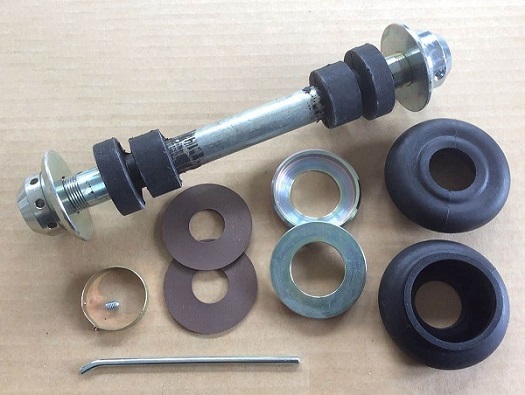
Bolts holding the powertrain assembly to the main frame passed through rubber buffers in the tubes, isolating the engine from the frame.
This design allowed the engine to "float" on a vertical plane, with lateral movement controlled by shims in the mounts. The suspension system kept the swing-arm true in relation to the engine position.
In addition to isolating the rest of the chassis from vibrations of the engine, it also separated the rider from vibrations of the engine.
First Commando Model
With production starting in spring of 1968, the first Commando model was the Mark-1. In retrospect, it was called 'Fastback', but when released, it was the only model.
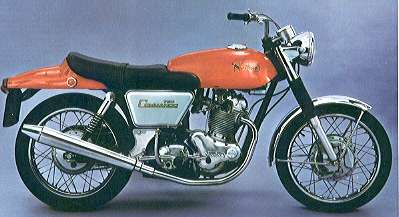
Shortly after the Commando Mk1 Fastback was introduced, the 750-S arrived.
Commando 750S
Introduced in 1969, the scrambler-style 750S sported high-mount left-side exhaust and a small chrome headlight. The front and rear fenders were also chrome.
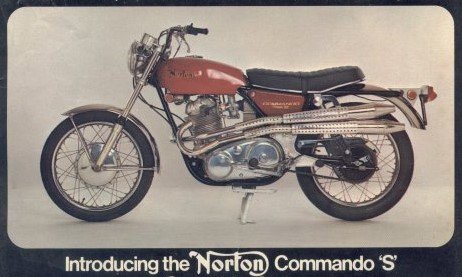
The 750S was fitted with a 2.5 gallon fiberglass gas tank, and along with it's metal side panels, finished in metalflake paint.
Also for 1969, the Fastback LR (Long Range) model was offered, featuring a larger steel gas tank.
Early 750cc engines had an engine prefix of 20M3. Ignition points were in a distributor housing and there was an external rev-counter drive. In 1970, ignition points were moved to the timing cover, and the rev-counter drive was now integral. Engine prefixes became 20M3S.
Commando Roadster
A new updated S model, called the Roadster, featured conventional low exhaust pipes with upward-angled mufflers. September of 1970 saw the introduction of the Commando Fastback Mark II, with a modified stand, chain guard and alloy hand levers.
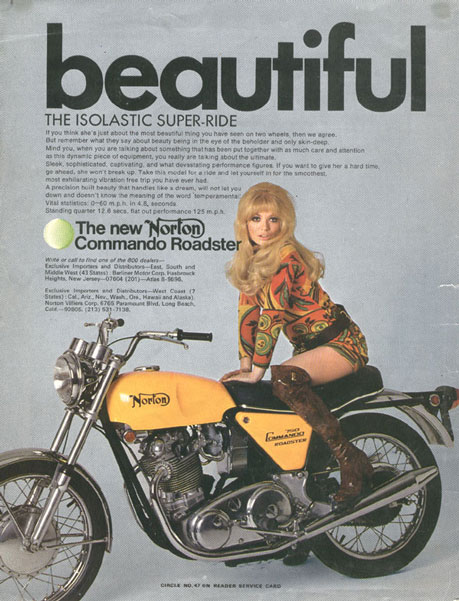
Subsequent Commando models were essentially the same basic motorcycle, but with different seats, fenders, gas tanks, side panels, and exhaust.
************************
1971 Commando Models
Joining the Roadster in 1971 was the Street Scrambler and Hi-Rider, along with the Fastback Long Range, which featured a larger gas tank.
Commando Hi-Rider
In an attempt to expand their market, Norton rolled out the Hi-Rider in 1971. A variant of the 750 Commando, it featured high handlebars and a "banana" seat with backrest and short sissy-bar at the rear. Also included was a small headlight and small 9-litre (about 2.4 gallons) gas tank.
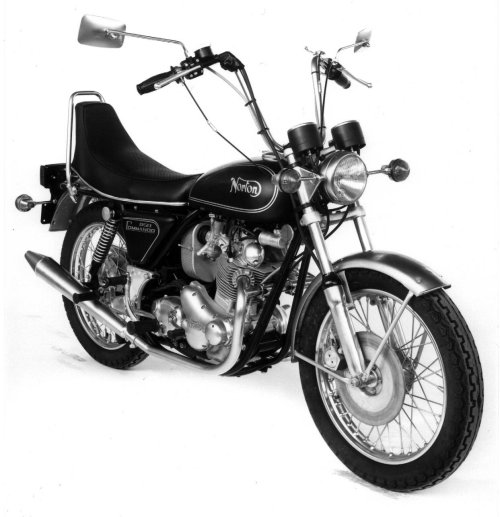
Nearly parodying bicycles of the day, such as the Schwinn Sting-Ray and Raleigh Chopper, themselves parodies of Harley choppers, the Commando Hi-Rider was a product of it's times. Although it stayed in the line-up for several years, sales were low. Curiously, it outlasted the high-pipe S-model.
************************
Norton Commando Production Racer
Although equipped with lights and fully street legal, the Commando Production Racer was just as it's name implied, a full-on race bike. And with 12 more horsepower over a stock Commando, it was capable of speeds over 130 MPH.
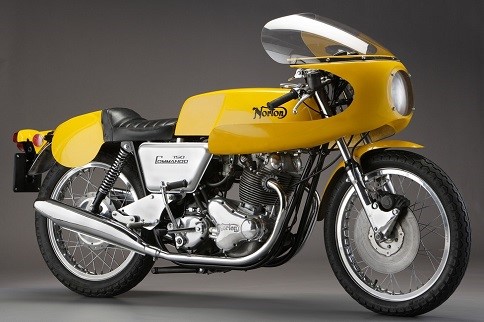
Carrying the nickname "Yellow Peril", Commando Production Racers were offered to the public for one reason--to make it eligible for sanctioned racing. Don't get your hopes up too high trying to find one, less than 200 were built.
************************
Front Drum to Front Disc Brake
When set up correctly, the twin leading-shoe drum up front worked very well.
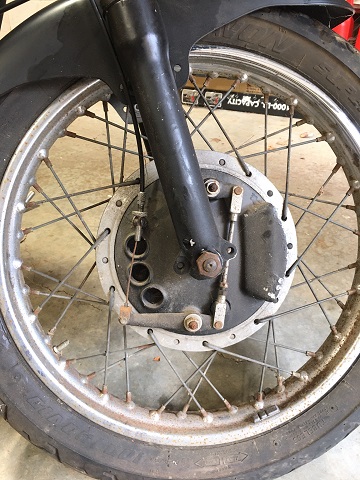
However, properly adjusting it was an acquired skill that not all mechanics liked to deal with, and was subsequently replaced with a less maintenance, single disc brake in 1972.
************************
1972 Commando Models
The roster now included the Roadster, Hi-Rider, Interstate, and Fastback. The Interstate featured a larger, fiberglass fuel tank.
Along with the new disc brake, fork sliders were redesigned, now being slightly oval shaped, which added stiffness. Triple trees (yokes) were also revamped, now having the steering stem attached to the top tree. This was a departure from the earlier, more traditional bottom attachment.
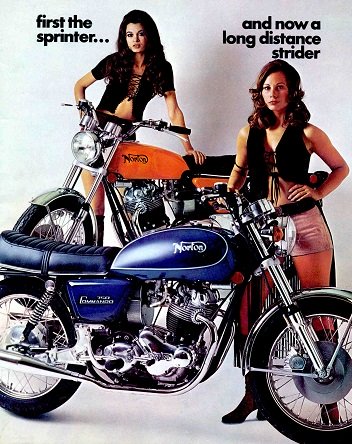
Combat Engine
In 1972, the 'Combat' engine was introduced with the appearance of the MarkIV Fastback, along with an updated Roadster and the 750 Interstate. The motor delivered 65-horsepower at 6,500 rpm with a 10:1 compression ratio. The first Combat engines were fitted with 32mm carbs.
Main Bearing Problems
Main bearing failures and broken pistons were frequently encountered with early Combat engines. However, after the factory upgraded the main bearings and installed a modified breather, they became more reliable.
************************
More so than most motorcycle manufacturers, Norton consistently focused on engineering and function. One example is the brake caliper - a one-piece housing with two pistons, versus two-piece housing with single piston like most competitors.
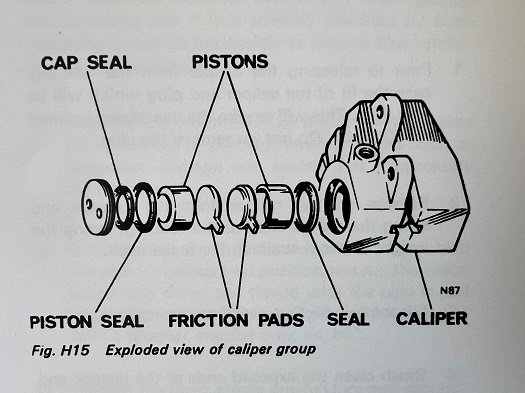
Read: Commando Brake Caliper Overhaul
************************
Machine Of The Year
It's an honor for any motorcycle to be voted Britain's 'Machine of the Year'. The Norton Commando won it five consecutive times; 1968, 1969, 1970, 1971, and 1972.
************************
750 Commando Mark-V
The last of the 750 series, the Mark-V was produced from November 1972 to mid-1973, and sold as a 1973 model. Engine bearings were improved, and compression was reduced to 9.4:1, both helping engine reliability. 1973 also saw the Long Range model discontinued.
Larger Engine Displacement
Production of a larger displacement engine began in April 1973. An increase of bore and stroke, now 77mm x 89mm, displaced 828cc (advertised as 850cc).
Revised Exhaust
Starting with 1973 models and continuing until the end of production, a balance tube (crossover pipe) was fitted between the left and right exhaust pipes.
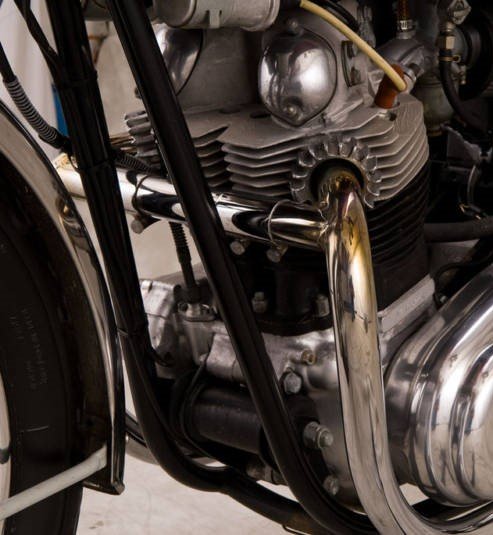
All Commando models from 1974-on had the larger 828cc engine. Compression was further reduced to 8.5:1 with the engine now producing 60-horsepower at 5,900 rpm. Although horsepower decreased slightly, increased torque from the larger stroke helped street acceleration.
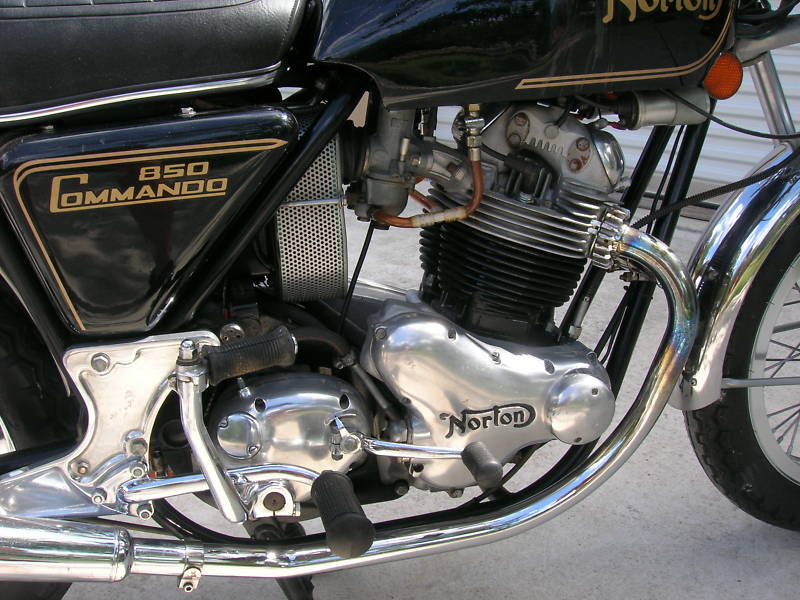
For 1974, the Commando lineup included the Roadster, Hi Rider, and Interstate. These were MkII models and all were fitted with the larger 828cc engine.
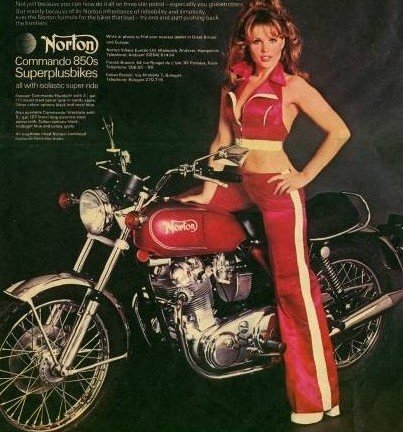
************************
John Player Norton Commando
Introduced in late 1973 and reaching the public in 1974, the John Player Norton (JPN) Commando was available with either a 750cc engine or the 828cc engine. Approximately 200 John Player Norton replicas were produced. All were right-side shift.
************************
850 Commando Mark 111
Due to popular request, an electric start system was designed and fitted to 850 Mark-III Commando's. Fortunately the kick-start was retained, as the electric starter was not totally reliable.
_________________________________________________
_________________________________________________
For the MkIII, the Isolastics system was upgraded. A paired-spring rated to carry the weight of the engine and transmission assembly was designed, taking some pressure off the mounts.
NOTE: A conversion to the later Isolastics is available for earlier models.
Commando Frame Outsourcing
During the years 1973-1975, Norton began outsourcing frames to Verlicchi, an Italian company that specializes in producing frames. The Italian-produced versions have a stamped 6-digit number (F100000) on the right-side steering neck, although is sometimes hard to see with coats of paint over it.
Right-Side to Left-Side Shift
In 1975, new federal regulations required all motorcycles sold in North America to have left-side shift and right-side brake controls. The Commando's two chief competitors, Triumph Bonneville and Harley-Davidson Sportster switched from right to left-side shift, with Norton following suit to continue selling in their largest market.
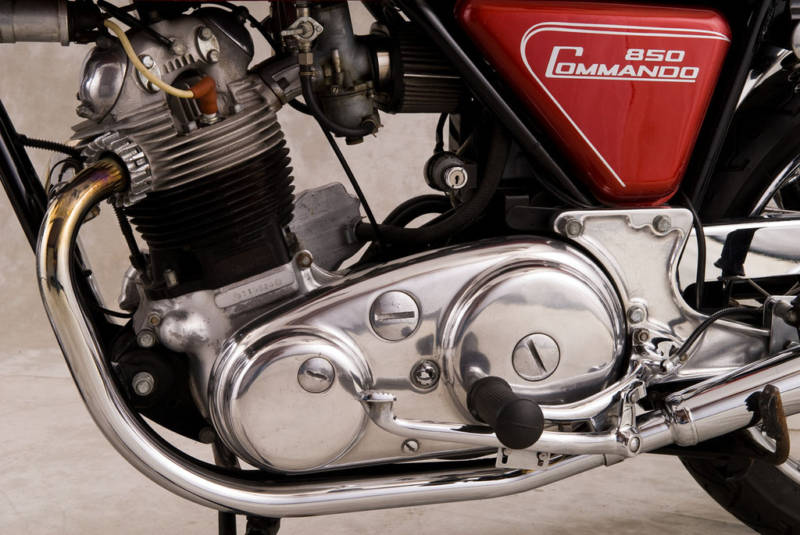
Other changes for 1975 included a higher output generator, and a new hinged lockable seat. A rear disc brake replaced the rear drum brake, and the ignition key was relocated from left side of bike to the top fork yoke. The air filter box and exhaust were redesigned to meet further U.S. requirements.
With weight increasing to 460 pounds, 1975 models were reduced to just two - the MkIII Interstate and the Roadster. These two models would remain unchanged for 1976.
Last Year Norton Commando
1976 was the last full production year of the original Norton Commando. After the year was over, remaining bikes were distributed to dealers as requested, and sold as 1977 models.
It is estimated that about 1,200 bikes were sold in 1976 and 1977. Public records show that just 30 units were sold in 1978, but these were actually "leftovers".
Demise Of The Original Company
In 1973, Norton-Villiers merged with ailing Triumph, calling themselves Norton-Villiers-Triumph (NVT). In 1975, NVT went into receivership, and carried on for several more years, but was never able to rebound. The company was eventually liquidated in 1978.
Norton Commando Production Stats
In all, approximately 55,000 classic Norton Commandos were built.
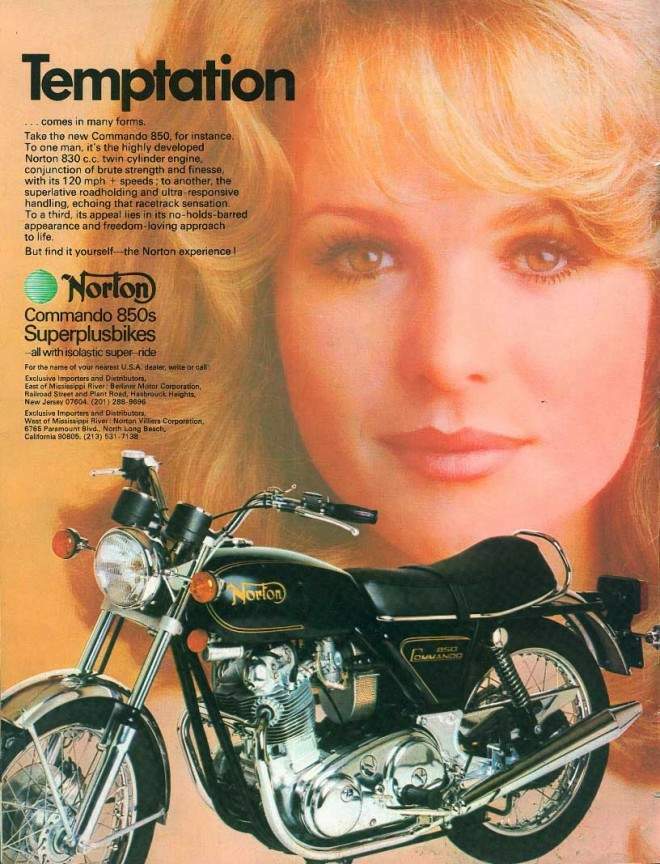
************************
Norton Commando Performance
In the March 1970 issue of Cycle magazine, tests were made on all then-current super bikes. Of the seven bikes tested, a Norton Commando-SS ran the quarter-mile fastest, at 12.69 seconds. The Honda CB750 stopped more quickly, but the Norton was faster.
Norton Commando Issues
Although the Norton parallel-twin engine was reliable and well-engineered, the bike's electrics were suspect and accounted for a fair amount of breakdowns. It was not uncommon for electric-only Commando owners to resort to push-starting their machines.
The Isolastics anti-vibration system, while reducing vibration, required regular maintenance. It certainly reduced vibration, provided the required free play in the engine mountings was at the correct level. However, too little play brought the vibration back and could crack the frame, and too much play brought handling issues, such as fishtailing in high-speed turns.
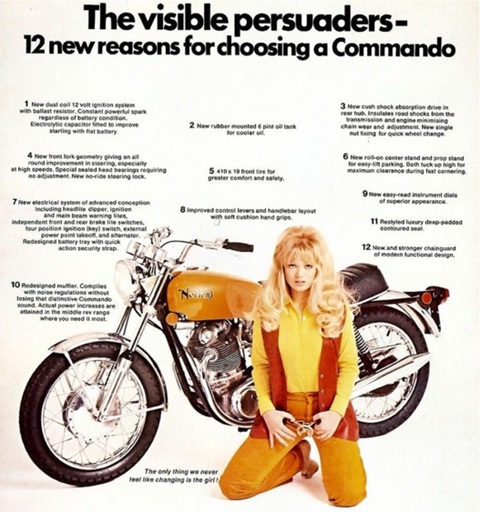
Norton Commando Value
An original Norton Commando is one of the most prized bikes in today's classic motorcycle market. It has both excellent performance and good parts availability. Over the years, it has remained one of the most desirable classic British bikes. Many will argue it was the best.
Commando owners in general don't seem to be obsessed with originality as are some other marque's. Examples with sensible modifications often sell as much as 100% original machines.
Owning/restoring a Norton Commando has several advantages over other classic motorcycles. Not only are parts still available, they are nearly all still available as factory pieces. And there are plenty of modern upgrades as well.
Read: Norton Commando Upgrades
************************
Norton Motorcycles LTD
Norton Motorcycles (UK) Ltd, established a new factory at Donington Park, Leicestershire in 2008 to manufacture a new Commando model, designed by Simon Skinner. In March 2010, they began production of a new Norton Commando, model 961-SE.
***********************
Clubs, Forums, and Resources:
Andover Norton Database
Access Norton Forum
International Norton Owners Association
INOA Resources/Links
Related Articles:
Norton Commando Build
Front Forks Overhaul
Cylinder Head Removal
Triumph Bonneville History
Triumph Trident History
What Are Whitworth Tools?
************************